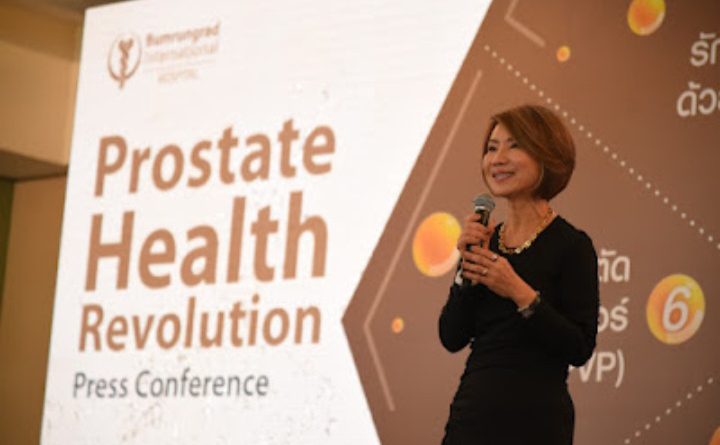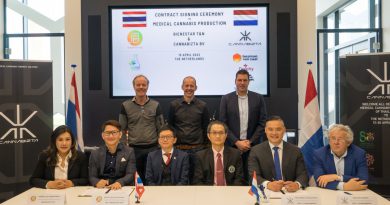Bumrungrad Urology Center Proud to Deliver Comprehensive Treatment Options for Those Suffering from BPH
Currently, the aging population causes public health authorities around the world to worry about age-related health issues. One of the most common health issues for aging men is benign prostatic hyperplasia, BPH, which is seen in over 50% of men over 60 and more than 80% of men over 70. Despite BHP being a benign condition, it is one that heavily impacts quality of life.

Artirat Charukitpipat, Ph. D., CEO of Bumrungrad International Hospital, stated that Bumrungrad International Hospital understands the problem and aims to treat patients and improve their quality of life. The Bumrungrad Urology Center is one of our many Centers of Excellence and has a team of highly experienced specialists utilizing the latest advances in medical technology to deliver effective comprehensive care to patients suffering from BPH and other prostate conditions, no matter how difficult or complex. This press event is focused on Bumrungrad’s dedication to being patients’ choice, due to our quality, safety, and effective care. We are committed to advancing care delivery through the use of the latest medical technology and adherence to international standards.
Dr. Viroj Chodchoy, Medical Director of the Urology Center and Specialist in Urology at Bumrungrad International Hospital, explained that BPH is the enlargement of the prostate, which constricts the urethra, causing difficulties in urination. In general, there are two groups of BPH symptomatology. Patients with the first group of BPH symptoms experience frequent and painful urination, while patients with the second group of symptoms experience trouble urinating, incomplete bladder voiding, or require an extended time to void their bladder.

Our focus at the Bumrungrad Urology Center is delivering high quality of life and peace of mind to our patients through individualized care and treatment options. Our experienced doctors adhere to the highest professional standards, treating over 5,000 BPH cases each year. Further, of our 5,000 annual BPH cases, 4,000 will not require surgical intervention. Only about 500 cases each year will require surgical procedures such as TURP which uses a transurethral resectoscope, HoLEP & PVP which utilize lasers to remove the prostate gland, Rezum, which employs water vapor to shrink the obstructing part of prostate, and UROLIFT system which opens up the urethra by anchoring the prostate with permanent implants.
Dr. Teerapon Amornvesukit, Urology Specialist at Bumrungrad International Hospital, stated that if patients have tried pharmacological therapies without seeing an improvement in their symptoms, unwanted side-effects, or complications such as recurrent prostatitis, difficult to pass urine, incomplete voiding after finish urination, bladder stone, kidney impairment from prostate obstruction, or blood in the urine, then an appropriate surgical intervention may be considered. Some popular surgical treatments include transurethral prostate resection (TURP) or using electricity or heat to shrink the prostate so that urine can pass more efficiently.

Laser therapies such as the holmium laser enucleation of the prostate (HoLEP) is a highly effective technique to remove the prostate for BPH patients. Such therapies remove prostate transurethrally to open up the urethra and to improve urine flow, allowing for complete voiding during urination. This technique meets international standards of safety. With this method, the tissue will be removed by using specialized equipment and sent for further testing at the pathology lab. The strengths of this treatment option are that it minimizes operative blood-loss, is able to perform for any prostate size or size-independence, produces very high satisfactory urinary outcomes, and provides the most durable results with a 10-year recurrent rate of just 0.7%. This technique is suitable for patients who are not concerned about semen volume post-operatively.
Dr. Jakkrit Issayanuwat, Urology Specialist at Bumrungrad International Hospital, stated that at Bumrungrad International Hospital, we can use a wide variety of technologies to treat BPH such as water vapor therapy — which we were the first to perform in Thailand in 2021. Water vapor therapy is especially useful for patients having difficulty urinating due to BPH. Moreover, this treatment option is fast, convenient, and safe. And research shows it is effective. The procedure was first approved by the USFDA in 2015 and received Thai FDA approval in 2021. Since 2021, the Bumrungrad Urology Center has used water vapor therapy to successfully treat 276 cases of BPH — about 30% of all BPH cases treated with water vapor therapy in Thailand. Also, the Bumrungrad Urology Center has been recognized by Boston Scientific (USA) as the first Center of Excellence in Asia for water vapor therapy in BPH treatment. This confirms Bumrungrad’s position as a leader in BPH treatment.

Water vapor therapy takes just 10 to 15 minutes to complete. A special instrument is sent into the patient’s urethra to deliver water vapor to the prostate to kill some of the obstructing prostate tissue surrounding the urethra. The dead prostate tissue will then be absorbed by the body and urine flow will improve, with little to no sexual side-effects or complications. Patients will be able to recover post-procedure at home with no need for an overnight hospital stay.
Dr. Atip Chatsudthipong, Urology Specialist at Bumrungrad International Hospital, stated that the Bumrungrad Urology Center was the first in Thailand to perform the UROLIFT procedure to treat BPH. The UROLIFT procedure was first approved by the USFDA in 2013 and approved by the Thai FDA on February 5, 2024.
The UROLIFT BPH treatment utilizes a special implant to lift and hold the prostate away from the urethra, thus restoring the natural capacity of the urethra. Before beginning the procedure, doctors will administer a mild sedative. After sedation, 4 to 6 tiny implants will be inserted, depending on prostate size and severity of condition, with the help of a specialized insertion device that goes through the patient’s urethra. The implants themselves are made of medical grade stainless steel and nitinol for flexibility. The implants lift the prostate away from the urethra to restore urinary function. UROLIFT is a minimally invasive procedure that does not remove any prostate tissue, nor does it require any external incisions. The procedure takes only 30 to 60 minutes.
After examination, doctors advise patients on the most appropriate treatment options, most suitable to their individual needs. Ideal candidates for the UROLIFT procedure are those experiencing moderate to severe BPH symptoms with a prostate not exceeding 100g and who can urinate with less than 350cc of urine remaining in the bladder. UROLIFT is also a good option for older patients, those with other health conditions, those who do not qualify for surgical intervention, or those who wish to avoid sexual side effects.
Though BPH is not preventable, it is fully treatable through a wide range of treatment options. Men over 50 are recommended to undergo prostate examinations annually. Also, men experiencing unusual urination problems should see a doctor at their earliest convenience to explore treatment options and to help ensure the best possible treatment outcomes. Seeing the doctor early on will also help with minimizing the chance of unwanted complications.
The Bumrungrad Urology Center’s teams of highly-experienced specialists are always available to help patients achieve the best quality of life possible.
For more information, please visit the Bumrungrad Urology Center on the 16th floor of Building A (Clinic) or call +66 2066 8888, +66 61 409 3943 (Hotline), or 1378.




